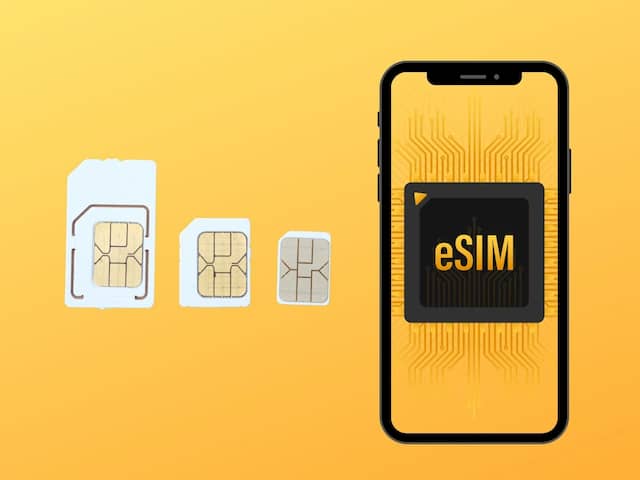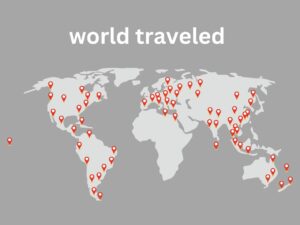An international CHIP card is an important part as you are planning your next international adventure, you know that data roaming is very expensive.
However, being without connection is impossible.
So, how do you stay connected during your trip? Without breaking your pocket.
Today, the traveler’s life is much easier, with the options we have available.
With my experience in traveling to several countries and using each one of them.
IMPORTANT:
As the strategy is to use different international chip, you will need an unlocked phone.
It is recommended, but it is not necessary for the phone to have 2 SIM cards. This makes it easier to maintain your personal line and use your local chip.
It is essential to confirm that your phone’s frequency is compatible with the frequency of the countries you want to visit.
Here I’m detailing the three most cost-effective ways to stay connected during your international travel.
The 3 best options are as follows:
local chips,
International chip
Digital chip (eSIM).
I believe it is common knowledge that using your local line with international roaming is very expensive.
Except for exceptions in the regional agreements of some operators, such as those in Europe, the United States, Mexico and Canada.
As an example of cost, as of February 24, VIVO charges an average of US$8.00 per day for internet access in the United States.
Using a local chip for travel
When traveling to a country, the cheapest way to stay connected is with a local chip.
Many countries have a prepaid package that gives you access to a fixed amount of data, calls and texts for your trip.
Each local operator has its price, which varies depending on the characteristics of each package.
It depends on the amount of data, local calls, duration of the package.
Where to get a local chip.
You can usually buy a local SIM card at the airport, in newsagents, convenience stores, telecommunications and furniture stores, electronics stores and sometimes even in vending machines.
It is important to note that Chip suppliers at the airport may charge more expensive prices for packages.
It is always better to buy from a local network provider or a trusted seller to get the best deals and avoid fraud and faulty local chip.
Advantages of using a local SIM card for travel:
- Receive a local number to make calls and texts.
You are not tied to a contract and can switch providers at any time. - It’s one of the most tried and tested options for staying connected.
Disadvantages of using a local SIM card for travel:
- You will need to choose a supplier for each country you visit.
- Going to the store wastes time buying a local chip.
You have to open your cell phone every time to install the chip. - Refilling your package usually requires visiting a vendor again and purchasing another package.
Using an international chip for travel
An international SIM card is another way to stay connected when you travel.
This type of card is programmed to work on multiple networks in different geographic regions.
Unlike a local SIM card that works for a single destination, an international SIM card covers multiple countries and regions across the world.
This is a great option if you are traveling to several countries and want to avoid purchasing a local SIM card at every destination.
They are designed for long-term travelers, so they typically come with larger data packages.
Where to get an international chip.
As they are more specialized Chips, they require a regional operator, more bureaucracy and more expensive costs.
You need to research in advance, as they are not normally available in stores.
Advantages of using an international SIM card for travel:
- Its coverage will be regional, and it can use a single chip for several countries.
- You can choose between longer and more robust data packages.
- You can manage and top up your Chip online instead of through a physical provider.
Disadvantages of using an international SIM card for travel:
More planning and research is required to obtain an international chip.- It’s a physical chip – you’ll still need to remove and monitor your home chip.
- If your phone is lost or stolen, you will need a replacement SIM delivered to you (complicated when you are already abroad).
Using a Digital SIM (eSIM) for Travel
In recent years, technology has improved and international data agreements have evolved.
Therefore, using a Digital SIM (eSIM) is one of the easiest and most economical ways to stay connected when you travel.
For those who don’t know, a Digital SIM (eSIM) is a digital chip integrated into your smartphone.
It can be electronically reprogrammed via apps.
Therefore, changing plans and operators is very simple and you just need to download the operator’s app.
This avoids the need to physically go to the store every time you need to change your local SIM card.
You can buy one before you leave or while you’re on the go, change your plan at any time, and top up your package remotely.
Where to get a Digital SIM (eSIM) for travel
Today there are several providers (such as Airalo, American SIM, worldsim, etc.).
To buy your smartphone, it must be unlocked and compatible with a digital chip (eSIM).
Before purchasing, it is important to check with your operator to ensure that your smartphone is unlocked.
See if your smartphone model is compatible with Digital Chip (eSIM) technology.
Advantages of using a Digital SIM (eSIM) for travel:
- It’s 100% digital. You can buy and download a Digital SIM (eSIM) plan from anywhere.
- Store multiple networks – An eSIM allows you to store more than one network, so you can quickly switch between them. This is useful in case you lose signal or if you are in an area not covered by the network you are using.
- You can easily change plans and providers (no SIM removal required).
Normally the costs of the plans are lower than those of the physical Chip. - Keeps your phone number, making it easy to contact friends and family.
- Being connected in various countries and regions around the world without worrying about where to find your next SIM card.
Disadvantages of using a Digital SIM (eSIM) for travel:
- Not all devices are compatible with Digital SIM (eSIM).
- Your device must be unlocked.
- Activating a Digital SIM (eSIM) plan is a little more complex than inserting a new SIM into your phone.
Using the physical chip and the digital chip (eSIM).
On my trip around the world I visited 25 countries and used 18 local SIM cards.
I had to spend a certain amount of time in each place to go to the store to buy the Chip and change my phone.
In all cases, I had to go to the physical store to buy and/or update my plan.
On my last trip I visited 10 countries with 3 physical Chip and 1 digital Chip (eSIM) and two of the physical ones were more of a test, to see the difference between the physical and Digital Chip (eSIM).
I bought the physique in Egypt and Jordan.
Advantage of buying the local Chip.
- Calls and SMS in the country are included in the plan.
- Normally the amount of data is much larger.
Disadvantage of buying the local Chip.
- Having to physically go to the store.
- Physically changing the Chip.
Higher cost. - Each country needs to buy another Chip
Conclusion:
In the vast majority of cases, the digital chip (eSIM) is the best cost/benefit option.
However, for those who need to make local calls and use a lot of data, the local SIM card is generally the best option.
Please note: Opinions, reviews, analyzes and recommendations of travel and products are based on my personal experiences and research, without any link to any of these entities.
Some of the links may be affiliate links and, at no additional cost to you, I may earn a commission if you make a purchase.





